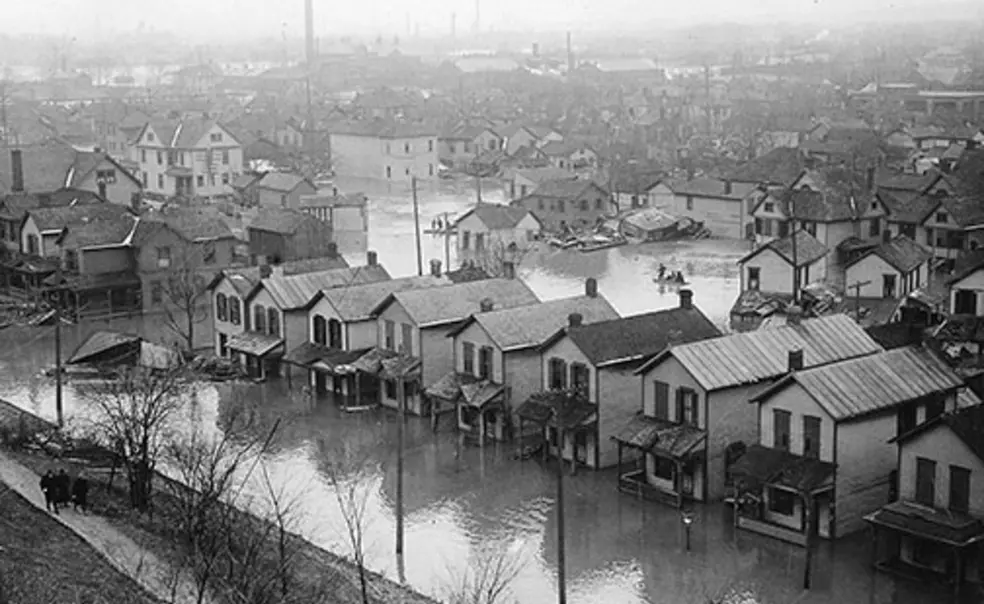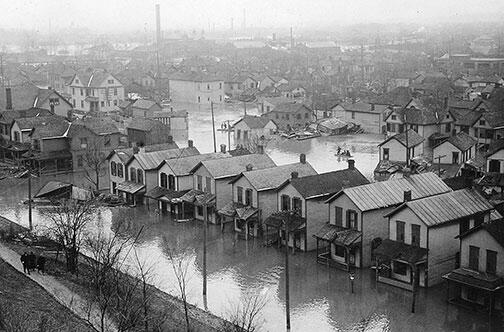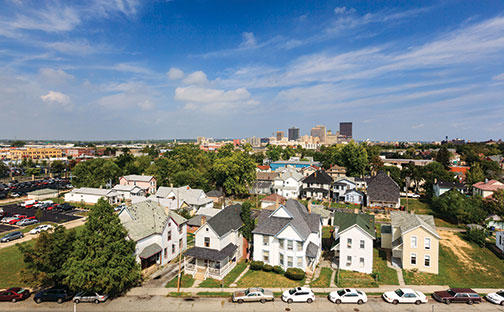Andy Snow ’72: Seeing Double
A photographer returns to the site of a 1913 natural disaster to capture images of rebirth
The Great 1913 Flood was Ohio’s worst natural disaster, killing hundreds and causing millions of dollars in damage. Streets were submerged in floodwaters as high as 20 feet from the Great Miami River. To commemorate the tragedy and salute the recovery, photographer Andy Snow ’72 went to the places that suffered the most damage and documented their rebirth by taking pictures at or near the spots captured in archival photos of the flood.
An image from 1913 shows small boats in several feet of water near Dayton’s Apple Street ferrying residents to safety. Snow’s photo captures a row of refurbished historic homes a block away, with Dayton’s modern skyline behind them. Seventy pairs of images comprise A Flood of Memories, One Hundred Years After the Flood: Images from 1913 and Today, commissioned by the Miami Conservancy District to recall the transformation of Dayton and seven nearby communities.

When Snow moved to Dayton in 1974, he found that fear of the river still lingered. His wife’s grandmother, Ethel Lentz Weeks, was 11 years old when her father nearly was washed away in his horse-drawn wagon. Today, Snow says, “there’s a vibrancy in the region as people are seeing the river as an asset.” Cultural festivals and new housing have brought new life to the communities, which now have a world-renowned flood-protection system.
Snow’s photographs, along with their archival twins, were recognized as one of the Top 20 Projects of 2013 by the American Society of Media Photographers. He approaches his work as a conversation between photographer and viewer. “To get good photos, it’s not the tools,” he says. “It’s what happens in your brain, eyes, and, most importantly, your heart.”














No responses yet